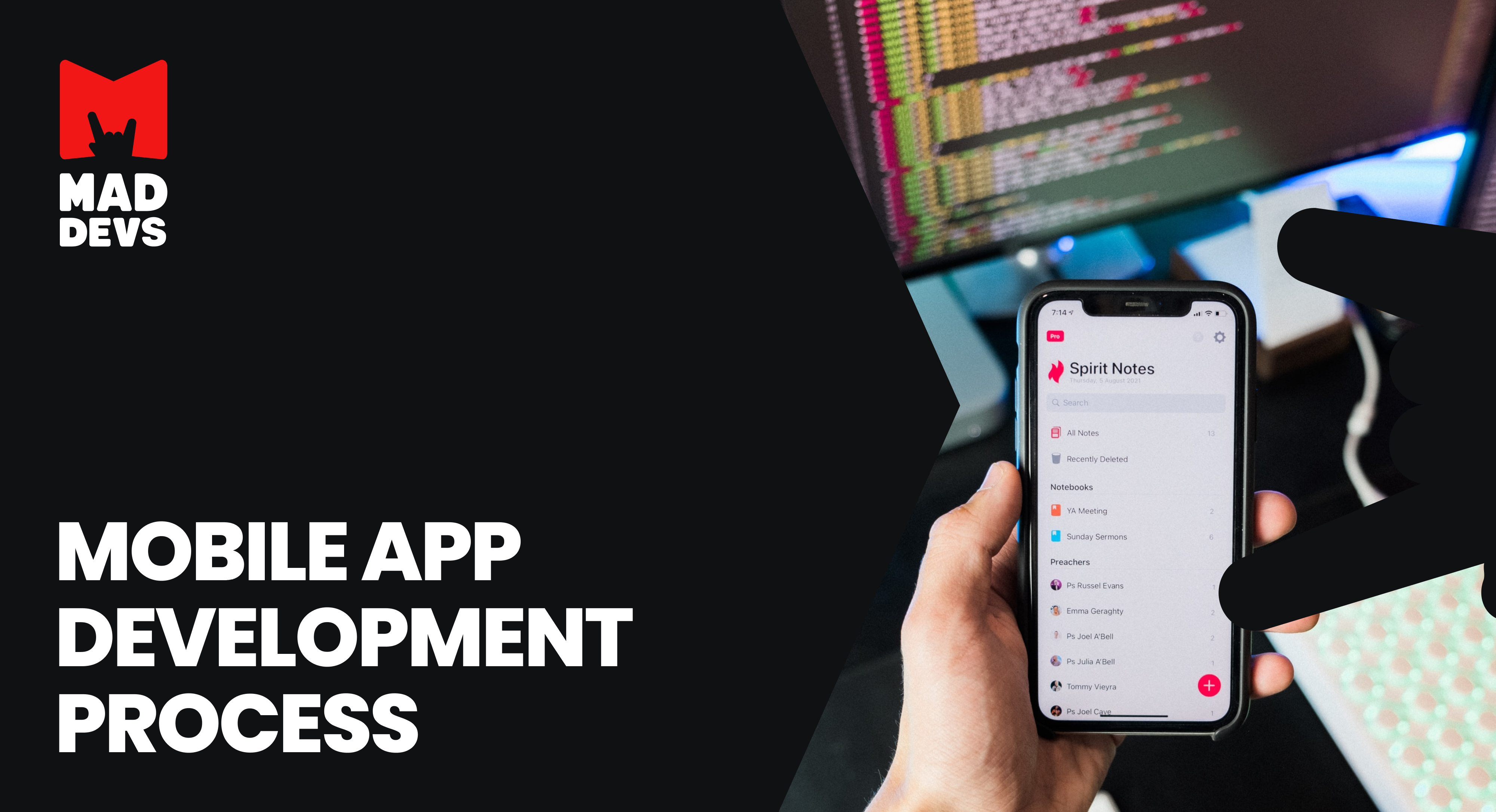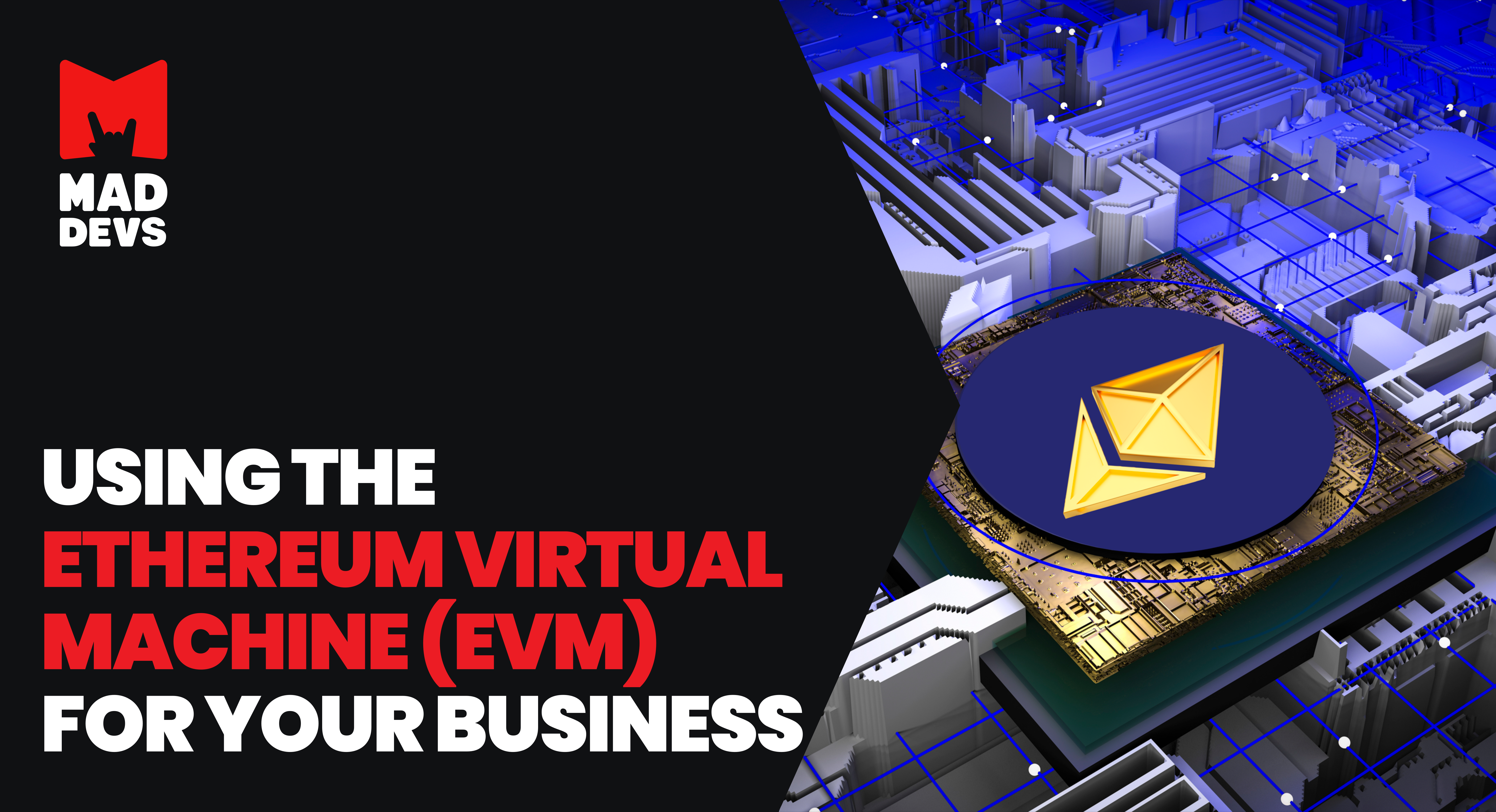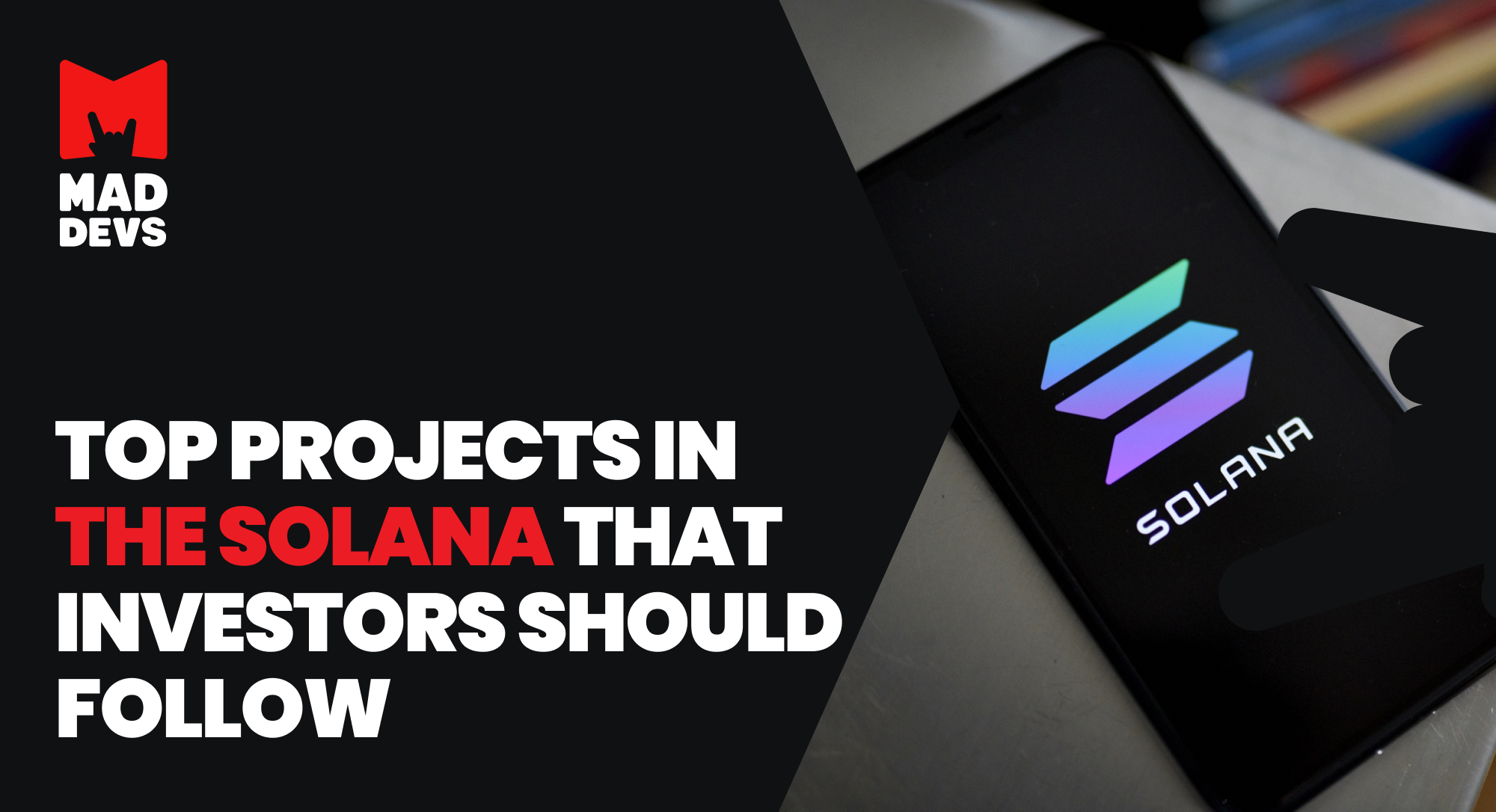If you want to build an app for your business, you can face a dilemma – what is the best approach to developing centralized or decentralized applications? What is the difference between centralized and decentralized?
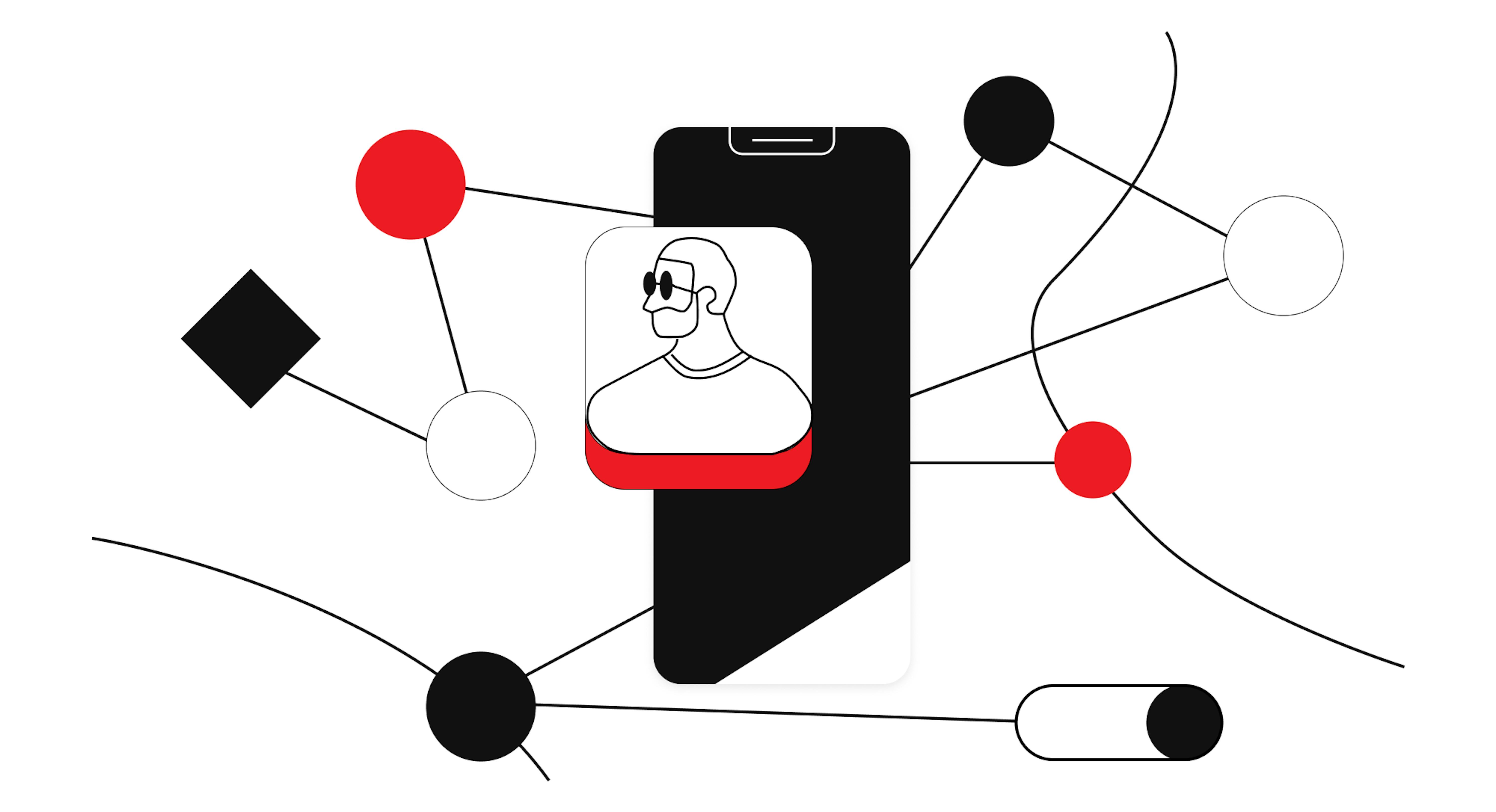
However, there's no straightforward answer to this question; it depends on your needs and goals. In this article, we will walk through the differences between both types of apps so you can decide how to proceed with your marketing and development efforts.
What is a centralized app?
First, we need to define terminology. A centralized application is an app we use daily. Centralized apps are owned and operated by a single company and run on one server or a cluster of servers. In a few words, an app downloaded from the store is a copy of the app, and the app sends and receives information from this server. There are three types of apps: native, hybrid, and web.
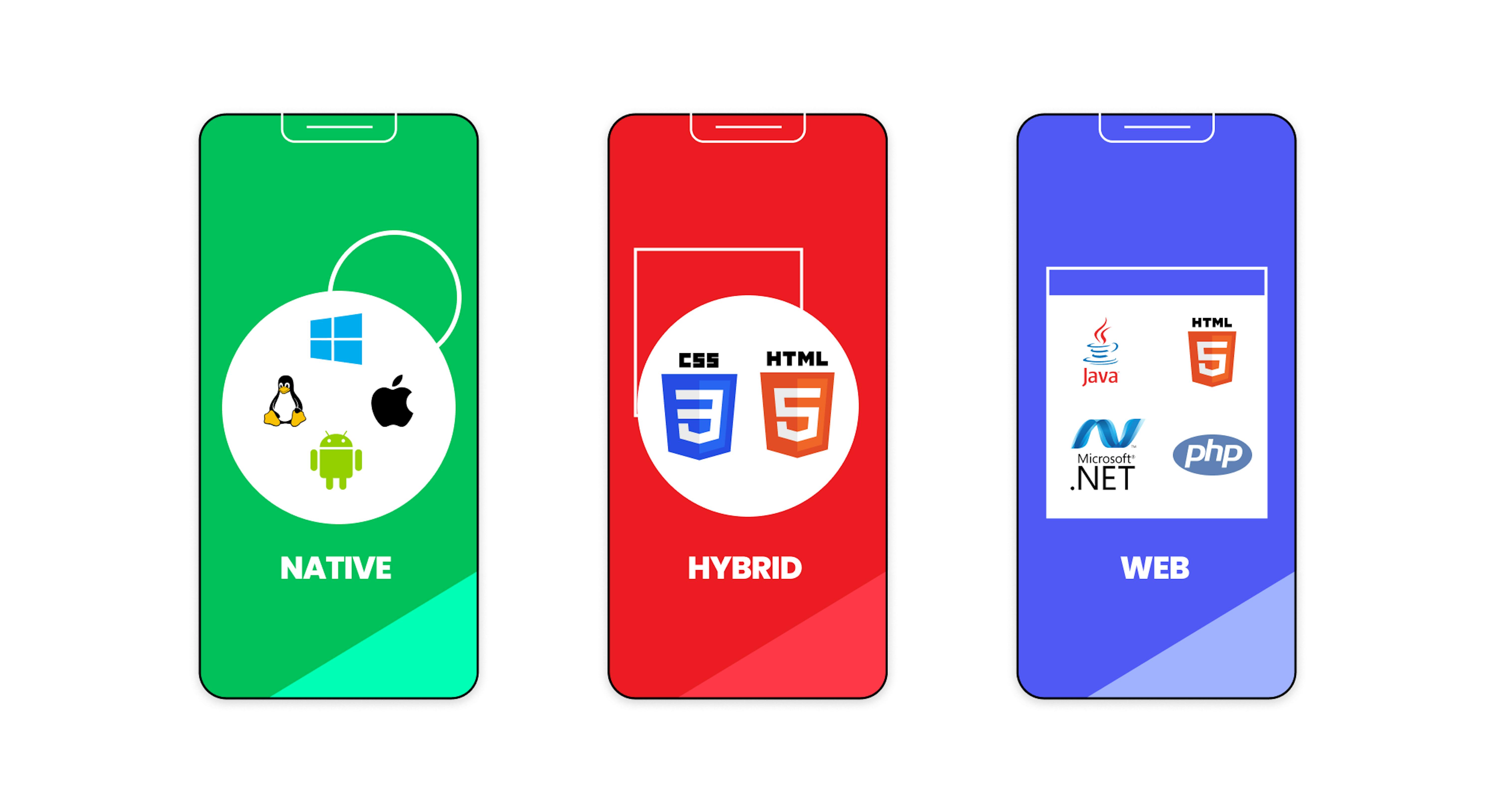
Native mobile apps
Apps that are "native" to one platform, whether it's Apple iOS, Google Android, or Microsoft's Windows Phone, are called native mobile apps. One of the main advantages of native platforms is optimization because they were specifically developed for this platform. The five best native mobile apps in 2022 are:
- Spotify
- Waze
- Tesla
- SoundCloud
No matter the size of the project, from start to finish, developing a mobile application is a laborious and time-consuming task. However, we have prepared a practical six-step application development.
Hybrid mobile apps
These apps are developed using HTML5 and run through a web browser, but they can be installed on devices like native apps. Hybrid apps are a perfect solution for companies that deliver content. Because building and maintaining apps for separate platforms is unnecessary, your business can save time and resources. Here are the favorite hybrid mobile apps in 2022:
- Discord
- BMW App
- NerdWallet
- Uber
Web apps
Web apps are built using the most popular programming languages, but cannot use mobile hardware or be sold in app stores. Anyone can use a web application for a variety of purposes. Many web apps can be accessed no matter what browser is used; however, some require a specific browser. The top web apps in 2022:
- Soundslice
- 2048 Game
- MakeMyTrip
- Yummly
In recent years, smartphones have overtaken computers, laptops, and tablets as the most popular way for people to access digital information, leading to solutions that make building mobile apps more efficient. Thus, centralized apps have become an essential part of our daily lives and global businesses that want to reach the maximum number of users. However, what are the advantages and disadvantages of centralized apps?
What are the advantages and disadvantages of centralized apps?
Centralized apps have a few distinct advantages over dApps. Developers can retain full control over the app and how it's used. Also, it is easier to update a centralized app because all updates are sent automatically to the user's device. Big businesses prefer centralized apps because they can handle high traffic volumes.
All that said, there is a list of disadvantages of using centralized applications that should not be overlooked.
If there's a system error, the app will be unable to function until the problem is resolved, which might inconvenience your customers. Also, a long absence of access to the application can cause an outflow of users, leading to business losses.
In addition, to avoid losing the data and the trust of customers, your cybersecurity and maintenance costs should occasionally increase. Users who leave their personal information in some applications automatically trust the application owner. This is due to a combination of factors, such as the need to protect and scale your central server and be prepared for users' personal information growth over time. Owners have maintained applications at their expense and can be compensated by users' subscriptions. Also, the owner is responsible for the entire infrastructure cost and scaling, including changes in price as traffic increases.
All of the above comes down to the main point: the main disadvantage is that a single organization controls the backend. People are scared to face numerous new risks of privacy infringements, data breaches, and the illegal circulation of personal information.
What is a decentralized app?
The decentralized app or DApp runs on a peer-to-peer (P2P) blockchain network. Furthermore, these decentralized applications are based on smart contracts and the front-end. Apps of this type use smart contracts to complete the transaction between two anonymous parties and the front end to interact with the system. To put it another way, the user pays for interaction with the smart contract, blockchain infrastructure to execute the operation, and store data. The price for the use of the system itself is already on the user, rather than on the system owner. The developer can take some percentage for the maintenance of the team or its business costs.
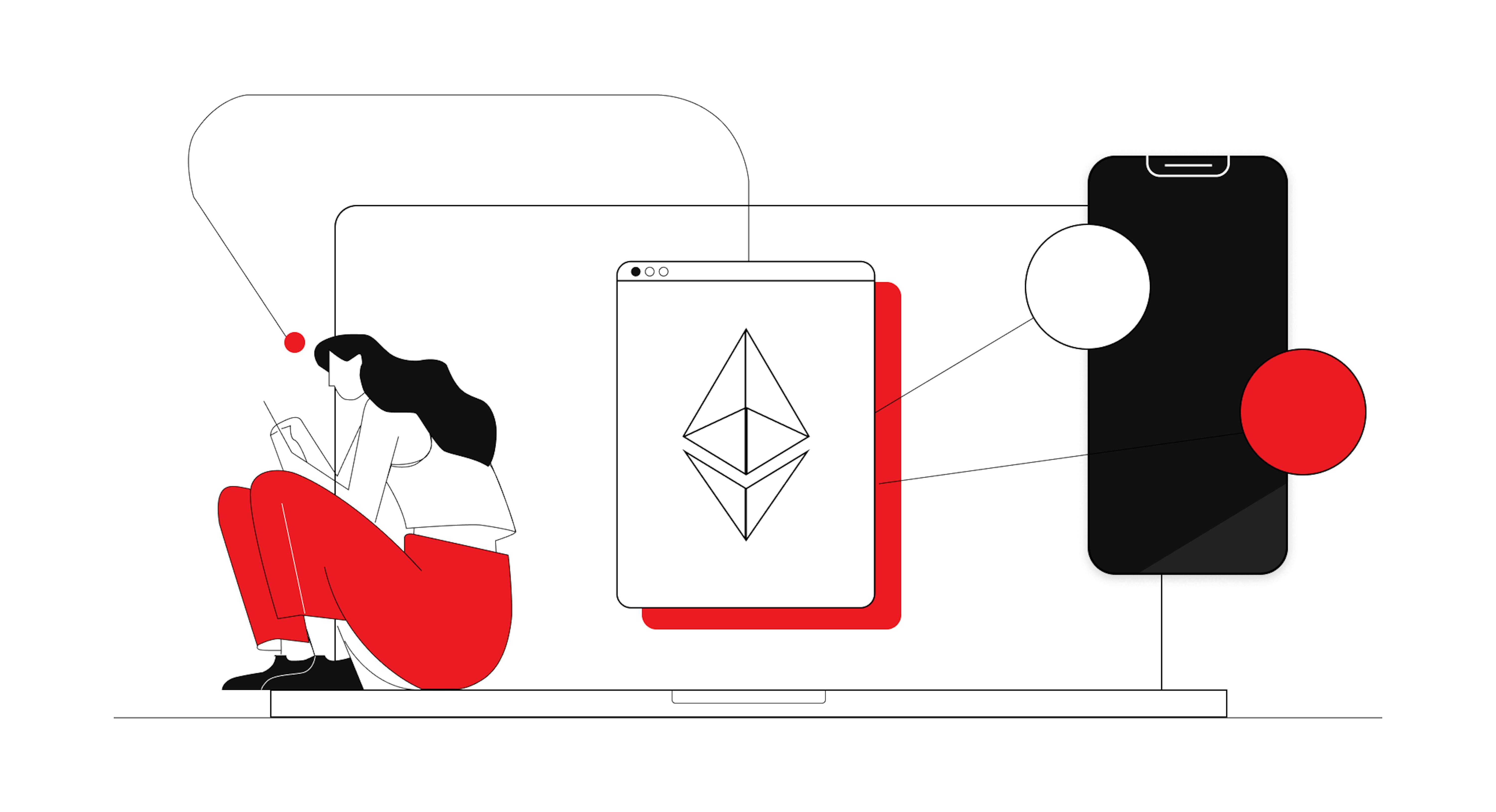
We can't introduce DApps without introducing smart contracts. So, what is the difference between smart contracts and DApp? Smart contracts in blockchain are Ethereum Virtual Machine (EVM) operation codes. In other words, these are simply translations of an agreement. An agreement contains a set of rules for the conduct of a transaction between two parties. A smart contract is a code that lives on the Ethereum blockchain and runs on EVM when the user accesses the address of its location, and can commit changes to the chain.
Check the article to learn more about Virtual Machine, its advantages and disadvantages, and what Ethereum Virtual Machines and smart contracts are. Explore how to build a business on EVM:
Once a smart contract is deployed on the network, it cannot be changed. Due to the logic written into the contract, DApps can be decentralized and not centralized by individuals or companies. For that, every contract needs to be carefully designed and tested.
Thus, these programs operate as intended, and no single party can influence their on-chain functioning. DApps are running on a decentralized network in combination with traditional front-end and back-end technologies. Decentralized applications combine smart contracts with a front end to create a complete computer program. However, some portions of dApps are smart contracts.
What are the benefits and drawbacks of DApps?
Just like centralized apps, decentralized apps have benefits and drawbacks. From the very beginning, DApps offer many advantages over traditional apps:
- P2P network. DApp doesn't rely on a single point of failure like a hosting server. This ensures no downtime or restrictions.
- Open-source. DApps offer users the ability to see code changes. Furthermore, users can read the code, but they don't have to influence its changes. As a result, this enables the ecosystem to grow faster and more securely.
- Data storage. Data is stored in blocks with no centralized authority.
- Transparency. Decentralized cryptographic data blocks should be validated and proven to be valid after they are considered a reliable source of truth. The second key aspect is that interaction with a DApp doesn't need to provide a factual identity. Furthermore, users can access stored data in the blockchain from the outside.
This technology is, of course, not ideal, and some problems are being worked on. One possible issue with blockchain technology is security. First, a smart contract audit should be the first step to securing any dApp. During a smart contract audit, you can identify the vulnerabilities of your smart contract code and find ways to fix them.
The second step is performing penetration tests, is another vital step to ensuring the security of DApps. Penetration testing can help uncover potential attack vectors, find hidden vulnerabilities, assess node vulnerabilities, and test APIs. The most effective combination is performing penetration tests and auditing the smart contracts.
Additionally, developers must ensure that key information is not embedded in dApps or public files. Using cryptography to verify a user's identity is a great security measure as long as no one else has access to the key. Thus, wallets and private key information should be protected. Moreover, protecting user information is also a key factor because nobody wants their personal information to be exposed. Developers must ensure that users' data remains confidential.
Besides, no matter how popular the blockchain topic is, it has limitations on use, such as:
- System scalability. When we talk about blockchains' scalability, we refer to their ability to process more transactions. Running a Bitcoin node is relatively cheap and can be done even on technically weak devices. But since thousands of nodes need to be aware of each other's activities, there are certain limits to their throughput. Limits are placed on the number of transactions that can be processed on the chain, all to prevent the chain from rapidly growing to a gigantic size. If it becomes too large and fast, the nodes will not be able to interact with each other quickly. Moreover, if the blocks are too large, they will not be able to relay over the network quickly.
- Limited bandwidth. If we are talking about transactions within the banking system, then the blockchain loses in terms of transaction speed. The most famous blockchain technologies are often slower than the daily transaction networks. Bitcoin processes up to 7 transactions per second, Ethereum – up to 20 transactions per second. When Visa processes more than 2000 transactions per second. In addition, when the number of network users increases, the transition processing takes longer.
- Transaction pricing. Depending on the network activity, transaction fees can be small or large. Market forces can also affect your fees. In contrast to high fees that can hinder wider blockchain adoption, very low fees may pose security risks.
- Deployment pricing. The cost to build a blockchain app depends on various factors, including app features, complexity, type of blockchain, blockchain platform, and other technology stacks. For example, private blockchain costs approximately $1500/month; public blockchain costs around $0.01, or transaction-based public blockchain costs about $750 for 3rd party.
- Hacking risks. It is believed that the blockchain is more secure than many modern programs. However, sometimes there are hacks of applications and systems built on the blockchain. A dilemma arises – on the one hand, it is believed that the blockchain is secure. On the other hand, we see news about hacking exchanges and stealing personal data.
- Difficulties in updating smart contract systems. Several reasons force smart contracts to be updated: errors in the code, changes in business requirements, and acceptance of community proposals to change how the contract works. However, the main advantage of smart contracts is that they cannot be modified. This also results in a consequence that system maintenance updates can not be done with classic development approaches. Though developers have found solutions that allow changing smart contracts, this is a labor-intensive process.
There are a lot of concerns about this technology, and, naturally, something new arouses some worries. Despite these issues, blockchain technology will likely evolve in the coming years. Technology has a way of sneaking past artificial barriers, just as nature does.
Use cases for decentralized apps
With that in mind, here are the particular use cases for decentralized apps to get you started on your decentralized journey:
1. Non-fiat coins or store value coins.
It means money issued by people or groups, but not a country. Now, this, of course, was the first use case for decentralized applications using blockchain technology. Blockchain solves critical elements when it comes to making money useful. Furthermore, remittances are more reliable since blockchains are more fault-tolerant than classical systems. Transfer data is visible and can always be checked or confirmed from the outside of the system. Moreover, blockchain technology makes it possible to safely transfer money to anyone on earth who has access to the network.
2. The tokenization of real-world assets.
The tokenization of real-world items into digital form is a reality implemented with DApps and blockchain. It is valuable because authentic digital certificates should prove almost everything you own. Digital certificates can not be duplicated or forged. Blockchain shows how we begin to separate ownership from physical possession for many things. Tokenization makes a significant impact on the way we use items in the future. It is a particular use case for the near future.
3. Consumer entertainment use cases.
The central aspect of this use case is game applications and video games. The global video game industry makes 150 billion per year, most of which comes from selling virtual items, avatars, skins, etc. Selling virtual assets is a great business model for video game companies, but it is not so great for players. People spend hundreds or thousands of dollars to buy virtual items and never own them. Game companies rarely allow players to trade or resell all this digital property. Property that players paid for. Now, if these virtual items are created on a blockchain, it would make it possible for hundreds of millions of video game players to own and trade them directly.
As you can see, there are a lot of use cases for DApp. We believe that with the development of technology, the scope of applications will continue to grow in the future.
Top DApp exciting projects
Moreover, you can already meet exciting and promising projects. Here are the best DApps in 2022:
Bomb Crypto is an NFT-based play-to-earn game built with the Unity game engine. To start playing, users must purchase a Bomb Hero NFT, costing roughly $50. Bomb Crypto also features its token, BCOIN, currently valued at $0.42. Its market cap is $4.5 million, with a 24-hour trading volume of $5.1 million.
Splinterlands was launched in March 2021 as a collectible trading card game built on Hive and WAX blockchains. Unlike traditional trading card games, the gameplay is blockchain-based, meaning that the in-game assets are tokenized, and the players have full ownership.
OpenSea was launched in December 2017. Today, one of the most popular NFT marketplaces was initially built on Ethereum and later integrated with Polygon to reduce the transaction fees users must pay. OpenSea features many high-value collections such as the Bored Ape, CryptoPunks, Mutant Ape Yacht Club, and more.
PancakeSwap, launched in September 2020, is the most popular dApp available. Lower fees are a major reason PancakeSwap is so popular and has a large user base. CAKE is a native token of PancakeSwap, which users can buy if they want to bet on the future of the exchange. The market capitalization of CAKE is $1.5 billion, and the stock is trading at $5.43 in March 2022. With a circulating supply of 276.6 million tokens, its 24-hour trading volume is $170 million.
Rarible uses a key technique from the DeFi boom to establish its reputation. Additionally, anyone selling or buying art on Rarible earns some 75,000 RARI tokens distributed each week to encourage activity.
Today, more than 350 Solana projects are on this open-source blockchain. In this article, you will read about is Solana coin is worth investing in and what the top projects are in the Solana ecosystem.
How do I build decentralized apps and centralized apps?
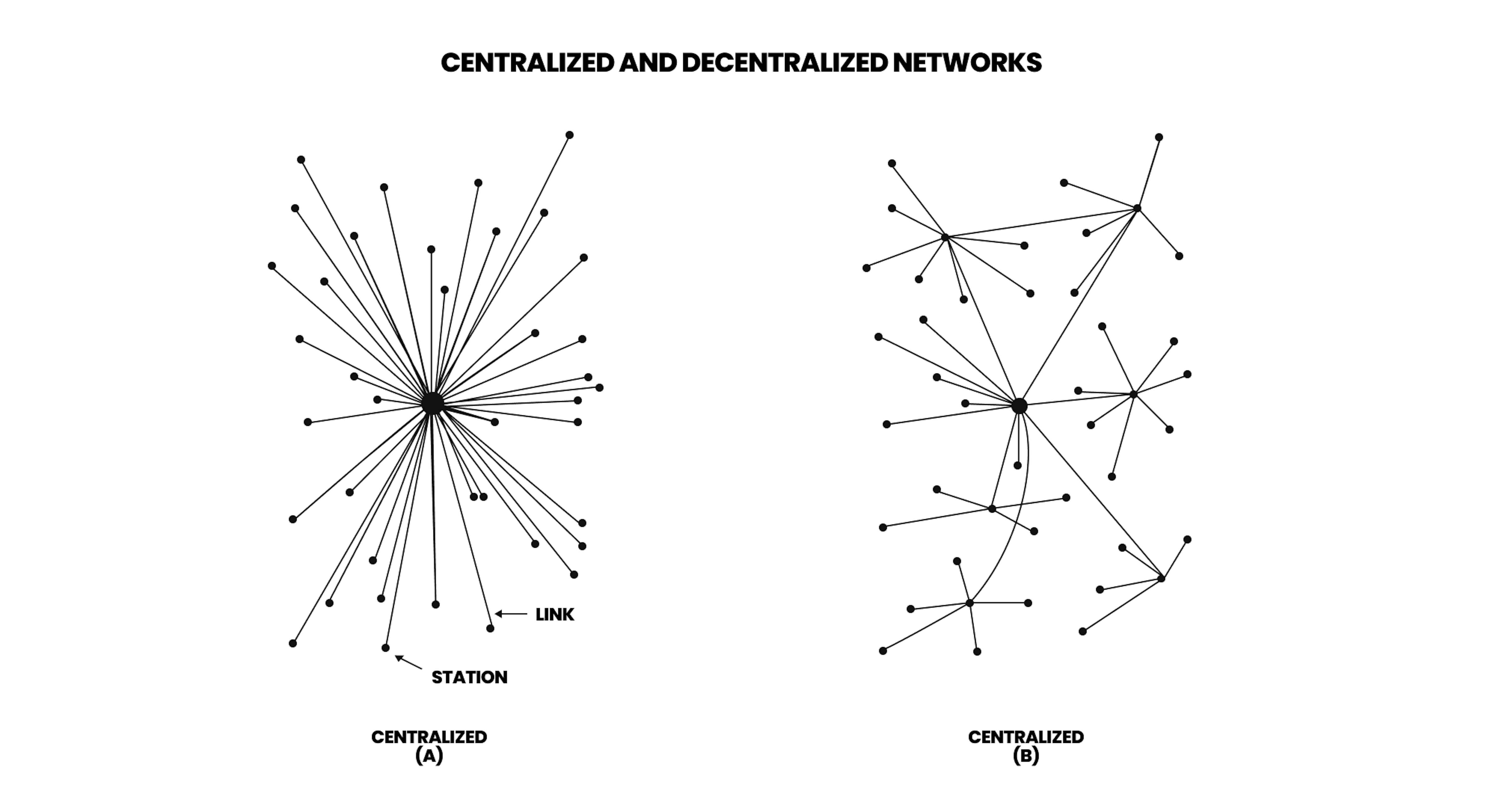
Unlike apps, DApps run their backend code on a decentralized peer-to-peer blockchain network. Centralized applications run on a centralized server or multiple centralized servers.
How to build a decentralized app?
DApps are developed differently from centralized applications. Let's take a quick look at the step-by-step process of a decentralized application:
- Check the app requirements for feasibility.
- Choose the proper blockchain for prices and restrictions.
- Develop smart contracts.
- Test smart contracts on the test net.
- Implement the front-end for working with smart contracts.
- Launch smart contracts on the main network and connect them to the front end.
- Perform complex system testing and bug fixing.
- Public announcement of the launch for the target audience.
How to build a centralized app?
The following steps can help you develop a centralized app for your business.
- Check the app requirements for feasibility.
- Choose backend development components.
- Choose a backend infrastructure (cloud or on-premise).
- Set up several environments for backend development (and pay for it).
- Choose a front-end application development components and target platform.
- Create a wireframe based on the features you want to include in your front-end application.
- Make a prototype of your front-end application to test its basic functionality.
- Fully implement the application.
- Complex system testing and bug fixing.
- Public announcement of the launch for the target audience.
Depending on your interest, your goals, and how much control you want over your app in the long term, the size of your intended audience, and, to some extent, how you wish to market your app. According to this, you can choose decentralized or centralized apps.
Centralized and decentralized apps, in short
Centralized applications are familiar to all of us, and we use them daily. However, web technologies also revealed new forms of application architecture. DApps are a new term, an app developed with a new decentralized type of architecture. Throughout the article, we have explained the difference between an app and a dApp. This article has also objectively explained the advantages and disadvantages of these types of apps. Finally, we also included the development process of both. We hope this article was helpful for you and will serve as a guide for app and dApp development.
If you are still unsure, Mad Devs can help you make a good decision on this complicated question and start building your app.



